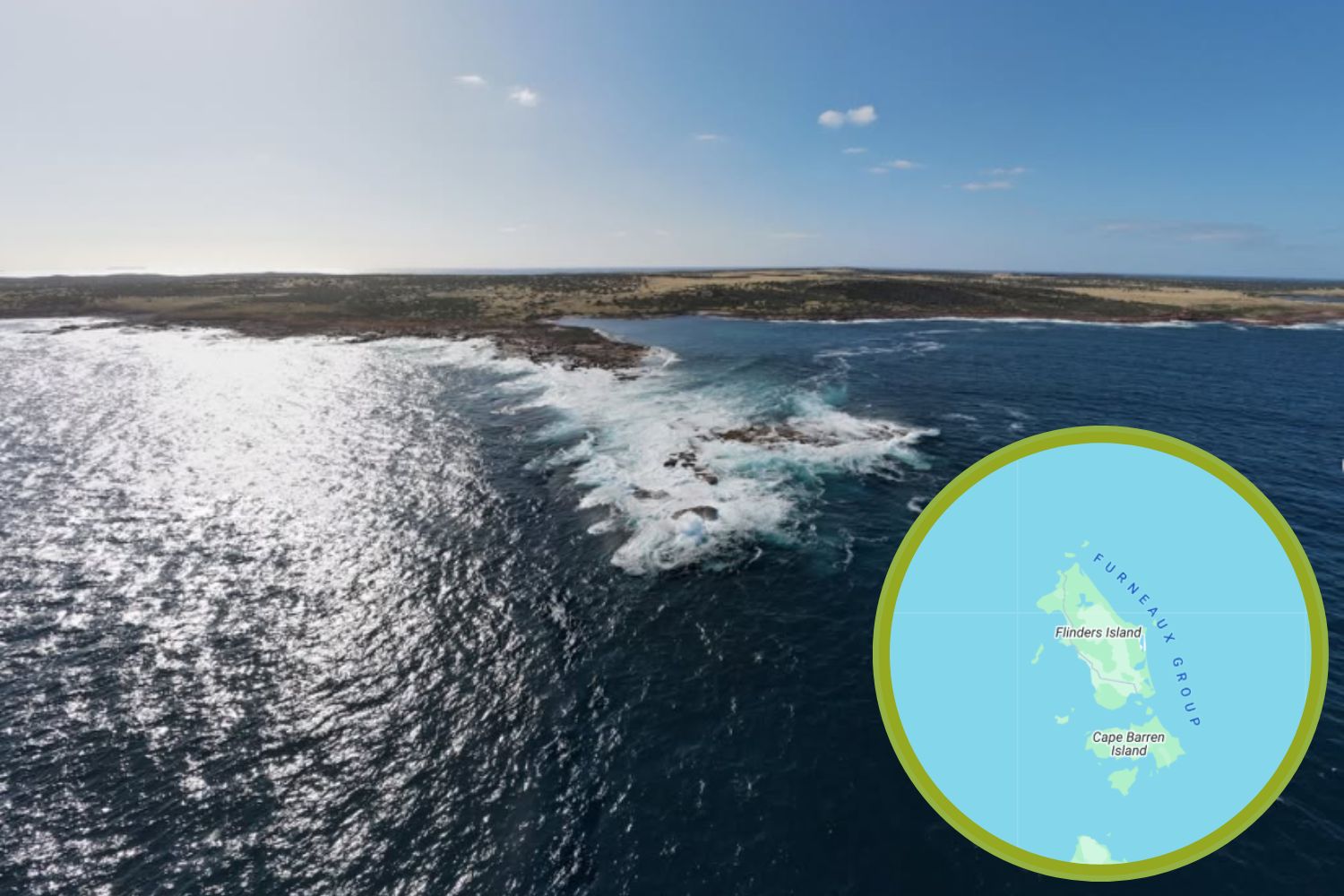The main island of the Furneaux archipelago is at the center of an unprecedented conservation initiative. Thanks to $4.8 million in funding, the island will be cleared of rats, mice and cats to create a pristine sanctuary to (re)introduce species such as the banded hare wallaby and the Shark Bay bandicoot

@flindersislandecoescape (IG)
Off the mainland Australia and Tasmania, within the Bass Strait, lies Flinders Island, to be developed into a wildlife sanctuary. Extending approximately 803 square miles, this largest of the Furneaux islands is soon going to be free of rats, mice, and cats in an ambitious invasive species eradication plan. The project, funded by 3.2 million USD from the Australian state and federal governments, aims to restore the island ecosystem to its pre-European settlement natural state.
The objective is to regain the natural balance of the island so that indigenous wildlife can thrive as it once did. With its rolling landscape rising to Strzelecki Peaks (2,552 feet) and rocky shoreline, Flinders Island has long been of great importance in terms of biodiversity. About 75% of its landmass remains under native cover, providing habitat for a high concentration of seabird species, including the distinctive Cape Barren goose.
From farming to conservation
The history of the island is inextricably linked with European discovery and Aboriginal cultures. English explorer Matthew Flinders mapped its coastline in 1798 and noted the abundance of the banded hare-wallaby, one of the marsupial species that occupied the island. However, with the coming of sealers and the introduction of exotic species like cats and rats, many native species disappeared.
A $4.8million project to turn Flinders Island into a refuge for nationally threatened mammals has just been announced. Find out more: https://t.co/8nROHeUhhL#flindersislandsafehaven pic.twitter.com/rwIqdhAoar
— SA Department for Environment & Water (@envirosanews) February 4, 2025
During the 20th century, Flinders Island was a sheep-farm center, which was run by the Woolford family between 1979 and the early 2000s. However, with rising expenditure and the downward trend of the price of wool, farming did not prove profitable. Today, Jonas Woolford, who co-owns one of the island’s properties, has a fresh objective: restore Flinders Island to its earlier form, how it was, when Flinders himself was astonied by the wildlife.
A “pest-free” island
The Flinders Island Safe Haven project is a turning point in the existence of a previously isolated island. Rodent extermination, in May, will involve helicopters seeding bait to eradicate mice and rats. This is followed by a second but more complex operation to address around 200 feral cats with the use of thermal-imaging drones and expert staff from New Zealand and Tasmania.
Free of alien species by the year 2025, Flinders Island will be prepared to welcome the reintroduction of indigenous species such as the banded hare-wallaby and the Shark Bay bandicoot, a small burrowing marsupial, both extinct in the wild. The fact that the island has subfossil evidence of these animals there suggests that the possibility exists for their return to inhabit and thrive again.
The benefits of this project extend beyond wildlife. The eradication of non-native species will also benefit the island’s plant life, allowing plant species—whose seeds had been consumed by rodents—will be able to regenerate. The entire ecosystem, from coastal birds to reptiles and invertebrates, will be positively influenced by this rehabilitation process.
The Woolford family, the ones directly managing the project, has consulted the Elliston community to introduce measures of biosecurity that will prevent any future invasion. In order to maintain Flinders Island as a sanctuary, it requires protection for the long term against invaders that are yet to come.
Due to its isolated position and natural barriers, Flinders Island is a perfect haven for fragile species. The Flanders Island Safe Haven program is a showpiece of nature preservation and proof that human control can be utilized to correct historical environmental mistakes.
